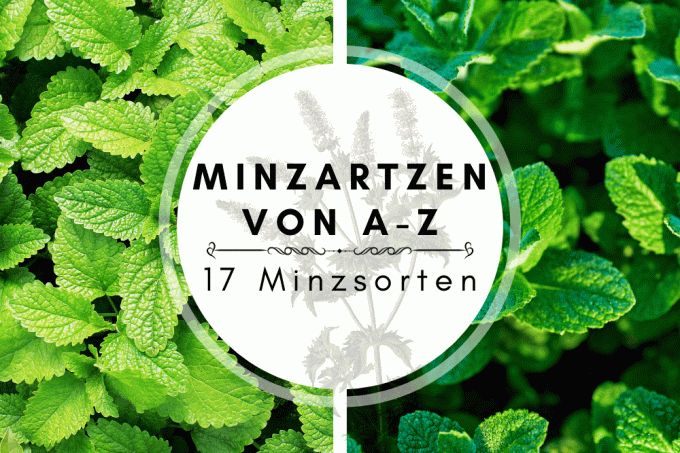
table of contents
- Peppermints
- Fruit mints
- Kinds for tea
The mint genus bears the botanical name Mentha, there are many different types of it. The herbaceous plants belong to the mint family and are very persistent. They have spread widely thanks to the aromatic smell and tangy taste of the leaves. Popular varieties include peppermint and Moroccan mint, however, most types of mint are difficult to distinguish from one another. Some are completely hardy, while others need winter protection.
Peppermints
Peppermints are one of the best-known species, and their cultivation and use has been a tradition in many countries for many centuries. Thanks to the many effective ingredients, the herbs have a healing and beneficial effect on the human body. These include the essential oil menthol, flavonoids as well as bitter and tannins, which have an antispasmodic and gall-promoting effect. They also have a pain-relieving effect on stomach problems and sustainably promote digestion. The perennial plants can be used for the production of teas, dishes and spices, they grow herbaceous and form underground runners and rhizomes.
Bavarian peppermint 'Proserpina'
The German breeding “Proserpina” comes from the Bavarian garden research institute Weihenstephan, which is responsible for the breeding of many selected herbs.
- Extremely robust and hardy herb
- Delivers high yields from harvest in the first year of planting
- Leaves are very rich in menthol
- Particularly resistant to diseases
English peppermint 'Mitcham'
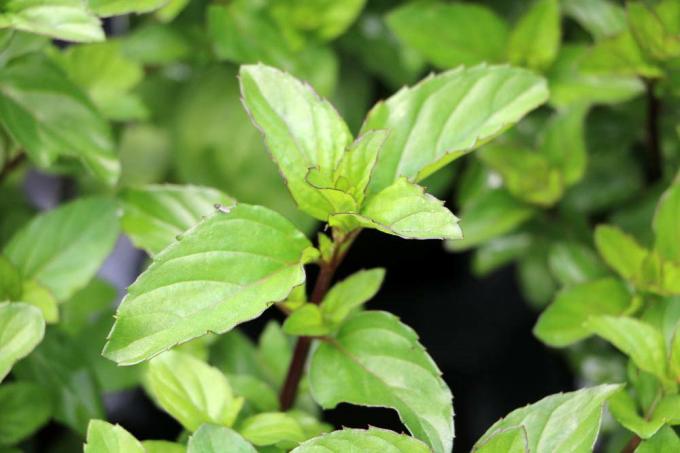
The English peppermint bears the name in botany Mentha x piperita 'Mitcham' and is one of the oldest known types of mint. It is the result of a cross between the corn mint and the water mint. Due to the great willingness to grow, it should have enough space in the garden to spread out unhindered. Regular repotting is advisable in the bucket, otherwise the plant is susceptible to rust.
- Originally from England
- Grows up to 80 cm high
- Perennial and extremely hardy cultivated form
- Prefers a slightly sunny to partially shaded place
- Very strong peppermint aroma
- Forms dark leaves and stems with red edges
- Needs moist site conditions
Curled mint

The distinctive mint herb bears the botanical name Mentha crispa and stands out for its curled and wavy leaves. That is why the plant is particularly effective in a beautiful planter on the balcony or terrace.
- Hardy and robust herb
- Reaches heights of growth between 40-80 cm
- Slightly sunny to partially shaded locations are ideal
Green mint

This type of mint is called in botany Mentha spicata and is also known as spearmint. The taste is strong and spicy.
- Forms delicate pink cylinder-shaped flowers
- Reaches heights of up to 120 cm
- Sessile leaves are opposite
- Slightly sunny to partially shaded places are ideal
Kentucky spearmint
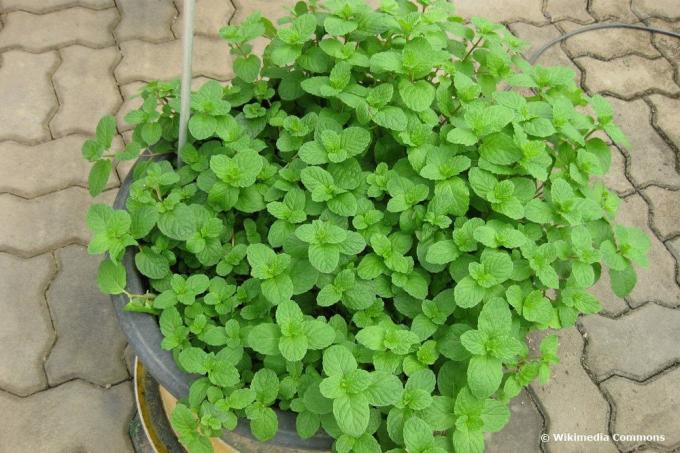
Kentucky spearmint has the botanical name Mentha x cordifolia and scores with a strong taste of menthol chewing gum. Therefore, this mint herb is well suited to the use of cold remedies and syrups.
- Perennial, but not completely hardy herb
- Not suitable for the garden bed in mountainous locations
- Needs winter protection on the balcony or terrace
- Can reach heights of up to 50 cm
- Slightly sunny to partially shaded locations are ideal
peppermint
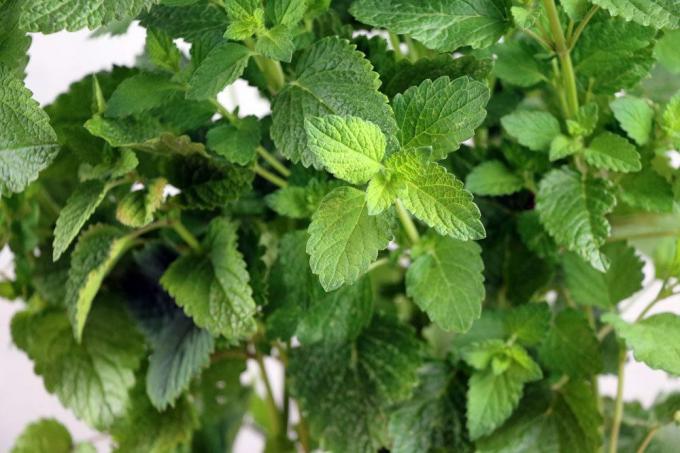
The peppermint bears the botanical name Mentha x piperita and is the classic among the various types of mint. The robust plant can be cultivated in the local latitudes without any problems, as it is quite undemanding and robust.
- Perennial and hardy plant
- Prefers partially shaded to slightly sunny locations
- Forms light purple spikes
- Growth height is 50-90 cm
- Stalked leaves are 3-7 cm long
Polei mint
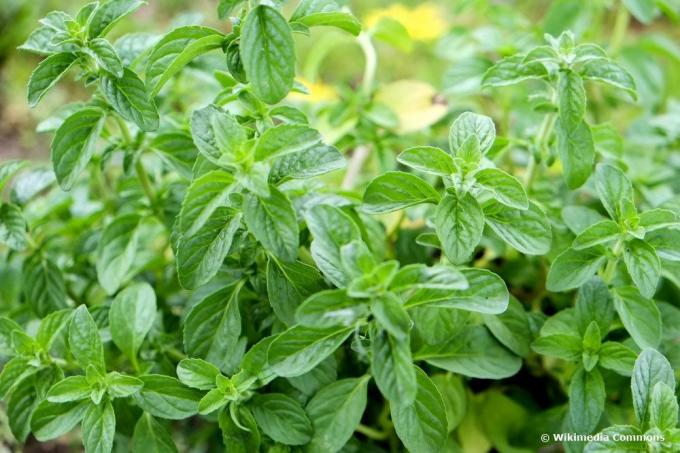
This variety is called in botany Mentha pulegium and is a creeping herb with small leaves. At first glance, many do not recognize it as a type of mint. Due to the growth habit and the strong scent notes, it is well suited for creating a fragrant lawn in the garden. In addition, it can also be cultivated as a slightly overhanging potted plant or in a hanging basket. On the other hand, the plant is not used in the kitchen because it contains the substance pulegon, which can be slightly poisonous.
- Not quite hardy mint
- Needs a mild climate on site
- Is dependent on additional winter protection
- Forms hairy and light pink flowers in the leaf axils
- Leaves are oval and smell extremely spicy
- Low growth height of 10-50 cm
Water mint
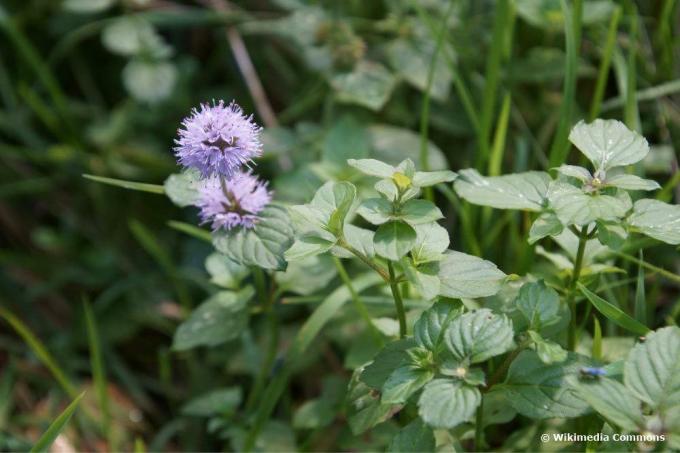
The water mint has the botanical name Mentha aquatica and is usually cultivated as a pond plant. It thrives both on the edge of the pond and in the shallow water zone; contact with the pond floor is important. In addition, this special type of mint can also be planted in the tub, but a permanently moist plant substrate is the basic requirement for this. Due to its high vigor, the water mint is not suitable for a mini pond on the balcony or terrace. It forms many rhizomes and takes up the entire vessel for itself within a short time.
- Perennial and also hardy mint
- Reaches heights of up to 90 cm
- Prefers partially shaded to slightly sunny locations
- Forms pink spherical flowers
- The leaves are ovate with a hairy stem
Note: Winter hardy types of mint can be cultivated in the garden bed and herb garden without any problems. For limited hardy varieties this is Planting in pots and planters on the balcony or terrace.
Fruit mints
In contrast to the peppermints, the fruitmints have a significantly lower content of menthol, so that they are not quite as flavorful. However, the various fruity aromas seduce the palate and also smell very good. Depending on the proportion and composition of the essential oils, surprising flavors and fragrances have emerged in recent decades thanks to new breeds.
Apple mint

The apple mint is called in botany Mentha suaveolens and has a refreshing aroma that tastes like apple. Therefore, the herb is not only suitable for making teas, but also for use in smoothies and salads.
- Perennial and hardy mint
- Can reach amazing heights of up to 80-100 cm
- Feels at home in sunny to partially shaded locations
- Develops pink and distinctive flowers
- Leaves are bright green, with an elliptical shape
Banana mint
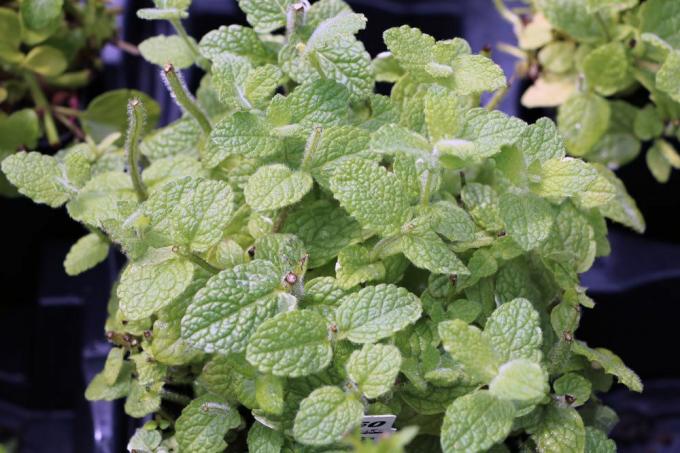
The banana mint has the botanical name Mentha arvensis 'Banana' and really gives off an intense banana scent. This is why this delicate-leaved variety is particularly suitable for sweet dishes.
- Perennial, but not entirely hardy mint
- Needs additional winter protection
- Grows creeping and not particularly tall
- Growth height is only up to 50 cm
- Semi-shady to sunny site conditions are ideal
Strawberry mint

The strawberry mint is called in botany Mentha species 'strawberry' and hardly tastes like mint at all. But this variety scores with an extraordinary strawberry aroma. When the leaves are rubbed, a bitter and very intense scent arises.
- Has a compact habit
- Reaches heights of up to 50 cm
- Ideal for limited space
- Prefers a bright, but not full sun, place
Tip: All types of mint enjoy regular and extensive watering. To do this, you should use some organic fertilizer every six weeks during the growing season. In spring, there is then a strong pruning, so the harvest remains consistently high.
Orange mint

The orange mint bears the botanical name Mentha piperita var. Citrata. It gives teas a fruity and exotic note, but the herb lacks the typical taste of menthol. Due to the gentle aroma, this variety is well suited for compositions with other tea herbs and for fruity desserts.
- Reaches heights of up to 80 cm
- Round leaves with dark red to bronze tones
- As bright and sunny location as possible
- Needs warmth to develop full aroma
- Slightly sensitive and not frost hardy in all areas
- Forms light purple flowers
Lemon mint

The lemon mint is called in botany Mentha x gentilis var. Citrata and forms a tart-sour taste aroma, which is reminiscent of lemon peel. This is why the herb is ideal in combination with fruits and fruit salads.
- Perennial and also hardy variety
- Grows around 40-60 cm tall in the garden
- Sunny to partially shaded places are ideal
Tip: When cultivating outdoors, a root barrier is recommended, as most varieties spread very quickly and abundantly if there are no limits to them.
Kinds for tea
Tea mints generally have a lower menthol content and are much less pungent in taste than peppermints. Therefore, these types are far more digestible and stomach-friendly, so that they are better suited as tea herbs for regular consumption. Tea mints are not only used on their own, they can also be used with other herbs as well as with green and black tea. These varieties are particularly widespread in the Arab world.
Moroccan mint

The Moroccan mint is called in botany Mentha spicata var. crispa 'Nane' and, along with peppermint, is one of the best-known types of mint. Due to the low demands on care, this very aromatic variety is also well suited for beginners.
- Perennial and hardy herb
- Compact growth, only 50-60 cm high
- Prefers sunny to partially shaded site conditions
Velvet mint
The velvet mint bears the botanical name Mentha x dumetorum and forms velvety leaves with a mild mint aroma.
- Perennial, but not completely hardy mint
- Needs warming winter protection during the winter months
- Grows to a height of 40 to 60 cm
- The variety grows extremely in width
- Sunny to partially shaded places are ideal
Chocolate mint
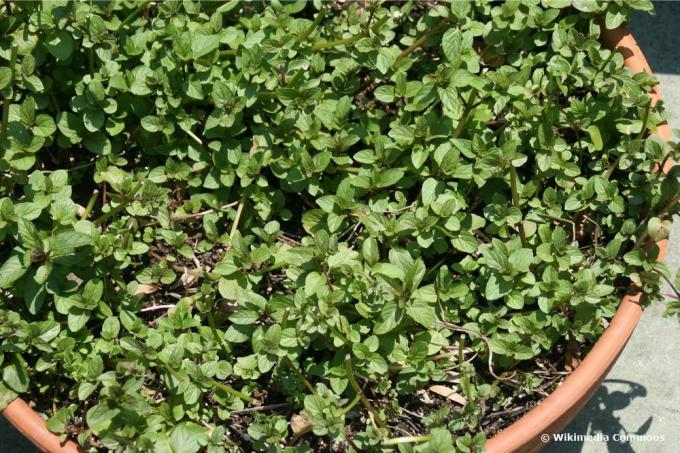
The chocolate mint has the botanical name Mentha x piperita var. piperita "Chocolate" and its taste is reminiscent of the chocolate 'After Eight'. The unusual herb is ideal for the preparation of teas and desserts.
- Belongs to the perennial and hardy species
- Reaches heights of 60 to 70 cm
- Leaves are ovate to elliptical
- Reddish leaf color with dark brown stems
- Flowers are light purple to intense purple
- Sunny to partially shaded locations are ideal
Turkish mint
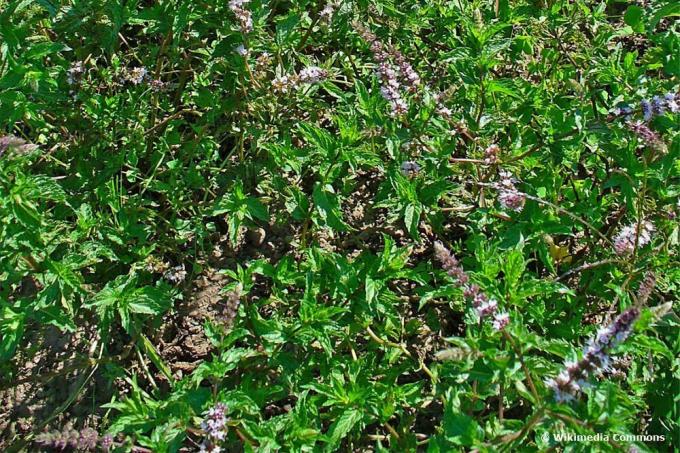
The Turkish mint has the botanical name Mentha spicata var. Crispa and forms very curled leaves. It is one of the types of mint that bloom very rarely.
- Perennial and hardy mint
- Reaches heights of up to 90 cm
- A sunny to partially shaded location is ideal
Tip: It is best to water your mint plant early in the morning or late in the evening when the sun's rays are not as strong. To avoid damage to the leaves, do not water the plants from above.
